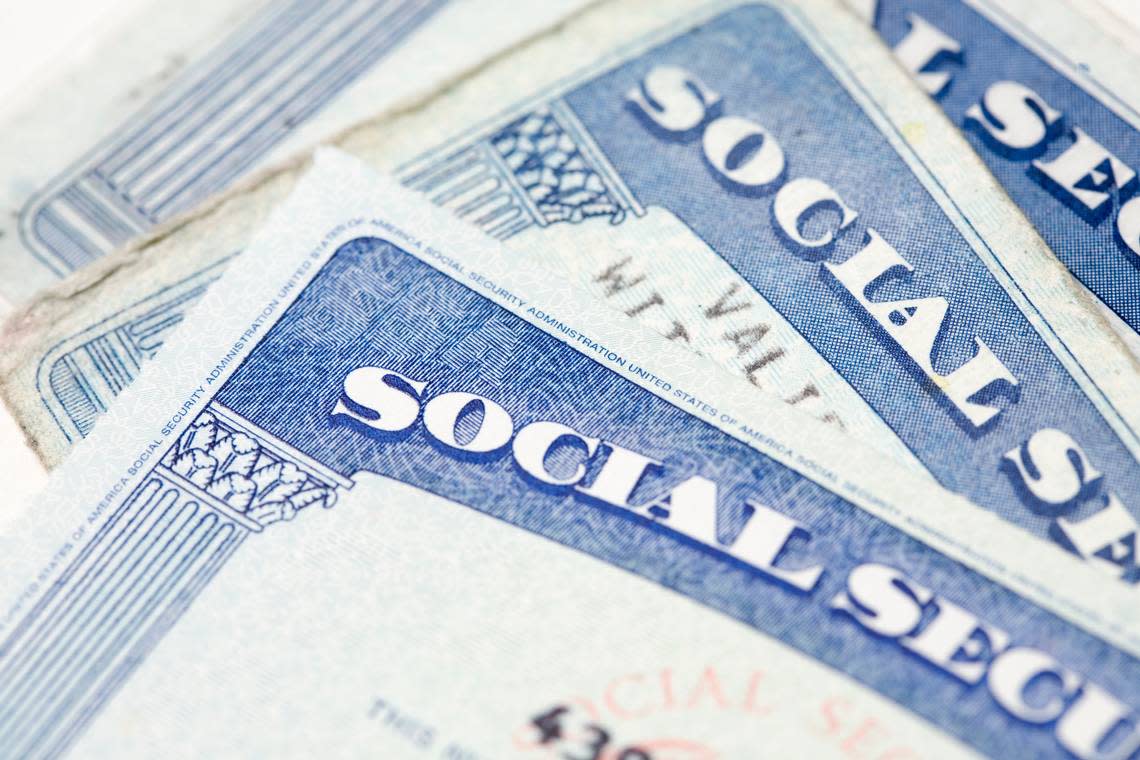California Social Security recipients will get a 3.2% increase next year

California’s 6.2 million Social Security recipients will get a 3.2% increase in their monthly benefits next year after the Social Security Administration announced Thursday a smaller bump than in the past two years because inflation has eased from its highest rate in four decades.
The average retirement benefit in August was about $1,792 per month. The new boost, due to begin with the January benefit, will mean an additional $57 per month.
While the hike is well below 2023’s 8.7%, it is above the 2.6% average of the past 20 years.
This increase comes as many older Americans struggle to adjust to higher costs for essentials including groceries and gasoline. The cost-of-living adjustment (COLA) is intended to offset higher prices, but it also will increase spending on a Social Security program already facing severe funding challenges. The change amounts to an additional $59 per month on average per beneficiary, according to AARP, which hailed the increase.
“We know older Americans are still feeling the sting when they buy groceries and gas, making every dollar important,” said AARP Chief Executive Officer Jo Ann Jenkins. “Social Security has been the foundation for financial security for hundreds of millions of people in our nation — and today’s announcement shows that it’s continuing to deliver on this promise.”
Social Security is the largest source of retirement income for U.S. seniors. Last year, it paid pension benefits to roughly 70.3 million people, as well as to roughly 8 million Supplemental Security Income recipients. The COLA adjustment is meant to track the increase in the overall price of goods and services, although many advocates say it should be more generous to reflect changes in seniors’ living expenses.
“The cost-of-living adjustment is an extremely important feature of Social Security,” said Nancy Altman, the executive director of Social Security Works, which opposes efforts to cut the program. “But people should not think of this as an increase – it’s intended to make sure seniors and people with disabilities can tread water, and stay above the surface, because without it they’d be drowning.”
Max Richtman, president and CEO of the National Committee to Preserve Social Security & Medicare, saw the adjustment as insufficient. He was critical of the formula used for the increase, saying it reflects the cost of living for workers, not necessarily seniors. The increase is calculated using price changes in July, August and September compared to the same months a year earlier.
“The formula does not reflect inflation as it impacts someone on Social Security,” he said.
Most beneficiaries spend more on health care and perhaps on housing, Richtman said.
The increase could also cost many beneficiaries more in taxes.
Since 1984, retirees have owed taxes on benefits if their income – including their Social Security payments – is more than $25,000 if they are single, or $32,000 if they are a married couple.
Those earning more than $34,000 and couples who earn more than $44,000 can be taxed on up to 85% of their benefits.
Social Security benefits have increased with the cost of living since 1975. There have been years when there was no increase — during and just after the Great Recession in 2009 and 2010 and in 2015, reflecting stable prices — and were as high as 14.3% in 1980.
Social Security’s trustees projected earlier this year that the system will be unable to pay full benefits by 2034. But there’s been no serious talk in Congress of changing the cost of living adjustment.
“That means the Social Security trust funds are on course to run out of reserves when today’s 56-year-olds reach the normal retirement age and when today’s youngest retirees turn 73,” said an analysis from the nonpartisan Committee for a Responsible Federal Budget.
The COLA is set by price inflation in the third quarter of each year.
Anqi Chen, the assistant director of savings research at the Center for Retirement Research at Boston College, previously said that the automatic adjustment is particularly important because much of the other sources of seniors’ retirement income does not adjust for inflation. About half of the retirement income of middle-class retirees comes from Social Security, Chen said, but much of the rest comes from 401(K) and IRA disbursements – which depend on investment returns.
Conservatives have criticized the higher payments and argued that Washington should use a less-generous formula to adjust for inflation.
“Social Security is using an outdated measure that’s driving up benefit costs,” said Romina Boccia, the director of budget and entitlement policy at the Cato Institute, a libertarian think tank, in a statement during the last year’s COLA adjustment. “Reform is long overdue.”
The Washington Post contributed to this story.


